Internet.com (April 14, 2001)
When most people think ethnic markets, they think niches. But as the latest census findings demonstrate, the nation's "minorities" are quickly becoming huge and highly cohesive markets. And, like the nation at large, minorities are moving online at an astounding rate.
For many, minority-focused web sites are the prime destination. And the numbers are nothing to sneeze at.
Blackplanet.com, for example, is ranked among the nation's top 50 sites, according to Nielsen, and is one of the ten stickiest. Chinese language site Sina.com boasts 17 million users worldwide, 1.8 million of those in the U.S.
In general, African American Internet users tend to skew older than their Hispanic and Asian American counterparts.
"Young people in all three groups are online, but in the 40s and 50s there's a drop off among Asian and Hispanics," says Omar Wasow, president of Blackplanet.com.
That's true among Asians in particular because the biggest growth in the Asian-American population is coming through immigration, primarily among blue collar workers, who tend to be less tech-savvy and less likely to speak English.
That hasn't prevented Sina.com from building itself into the largest Asian American-focused destination on the through a combination of financial services, chat rooms and virtual mahjong parlors.
For advertisers trying to reach the fragmented network of Chinese enclaves spread across the U.S., the Internet offers an unparalleled opportunity.
"It is a real national community -- a true national media. That's something that in the mainstream market is taken for granted, but in the ethnic media is new," says Hurst Lee, CEO of Sina.com. "It is close to impossible to reach the whole Chinese community in traditional media. This is one-stop shopping."
But Sina.com's numbers also reflect a cold hard fact of ethnic advertising on the Web: Just because the site is speaking a certain language, it doesn't mean it is reaching the audience you want.
"One of the stunning things that people have to remember is that ethnic marketing does not mean in-language marketing. It is marketing within a culture," says Benjamin Sun, founder of Asianavenue.com.
And even within those cultures, there can be dramatic differences.
"You have to look at the Asian population in two different categories," explains Joseph Lam, founder of L3 Advertising, one of the first agencies to focus on Asian-Americans. "A lot of new immigrants are working class. They are the other half of the Asian population. Their education level is not as high as is documented for the Asian population in America as a whole. Then again, their children have almost instantly become very affected by Internet technology."
Where Sina.com's U.S. audience is drawn largely from among foreign-born and first generation Chinese who tend to favor the mother tongue, Asianavenue.com is aimed at second- and third-generation Asians, who generally prefer English.
"For me, even though I'm Chinese, I have a lot more similarities to a second-generation Korean-American than an immigrant Chinese," explains U.S.-born Sun. "That Korean-American has gone through very similar cultural and life experiences, unlike the person who immigrated from China."
To illustrate the changing face of the Asian American consumer, Sun tells the story of his brother, who, concerned about the family's reaction to his plan to marry a Caucasian, asked his grandfather for permission. "My grandfather burst out laughing," Sun recalls. "He said, 'What's the problem? You're not Chinese! You barely speak the language. You've been to China once. You eat a lot of Chinese food, but so do plenty of other Americans."
Which emphasizes the danger of old stereotypes in the New Economy.
"An Asian American of second or third generation may take offense if someone looks at their face and assumes, 'Well, you're Chinese, right?' And bases their marketing message on that," says Lee of Sina.com.
That shifting of identity is beginning to occur among other minority groups as well.
"Where a lot of people expect the tension [between specific national backgrounds] to make a pan-national site difficult, we find that's not a barrier," observes Wasow of Blackplanet.com, sister site to Asianavenue.com and Mihente.com, a Spanish-language site. "It's important to let people express their heritage, but the old model of national heritage being the most important thing is falling away."
Nor is language necessarily the key.
"At home, Spanish many times is the preferred language," says Guillermo Paz, president of Populi Communications, a Puerto Rico-based advertising agency. "But once you leave your doorstep, many younger Hispanics shift to English."
One study found that only seven percent of Hispanics prefer to surf in Spanish. That reality is leading some advertisers to ensure that their messages in one language track closely with those in another.
"A lot of Hispanics watch Spanish TV and English TV, and it was weird when you saw a Bank of America ad in Spanish and one in English with a totally different vocabulary," says Paz. "People are realizing they should have one voice. The Internet makes that even more important."
The global nature of the Internet creates another set of challenges. By 2005, according to Insight Research, 70 percent of web-users will be non-English speakers. Which raises the question for marketers targeting ethnic groups online: Who do they want to reach, a billion Chinese on the other side of the Pacific or a few million inside the U.S.? And, if they are advertising in-language, what do they have to do differently to reach one and not the other?
The question even comes up when the language is English.
The U.S. portal of Rediff.com attracts a huge following among tech-savvy Indian expatriates -- and plenty of eyeballs around the world.
"There is tremendous language efficiency," says Jeff Lin, CEO of Admerasia, an advertising agency specializing in the Asian-American market, about Rediff.com's South Asian audience. "They all communicate in English so advertisers are not as reliant on the mother language as they are with Koreans or Japanese or Chinese."
But it also means advertisers need to keep <I>their</I> eye on the ball.
"The Internet helps companies expand beyond boundaries and has really brought our clients to the overseas audience," says Lin. "But the question of what we do with that is still in the infant stage."
Like their mainstream cousins, ethnic Internet sites are not immune to the dot com malaise. The collapse of sites like Quepasa.com, which just last summer commanded the highest awareness of any Spanish-language site, has left some media buyers treading softly.
"We've seen a lot of Spanish-language web sites that have already gone under, so from an advertising standpoint it makes us a little squeamish," says Kim Chance, associate media director of Hispanic advertising powerhouse Bromley Communications. "But we still think it's a viable medium to target our consumers."
And at the end of the day, most ethnic marketing specialists say, it all comes down to marketing 101.
"The Internet gives us the ability to do a regional attack, to know where the potential customers live and their specific ethnic backgrounds and tailor messages to fit," says Paz of Populi Communications. "This is no different than you would do with the general market."
Adds Wasow of Blackplanet.com: "One of the core messages of ethnic marketing even before the Internet was that you need to approach people with a relevant message and you need to try to build a relationship with the community. So while the strategy of a lot of ethnic oriented marketers may not change, the Internet really raises the bar."


